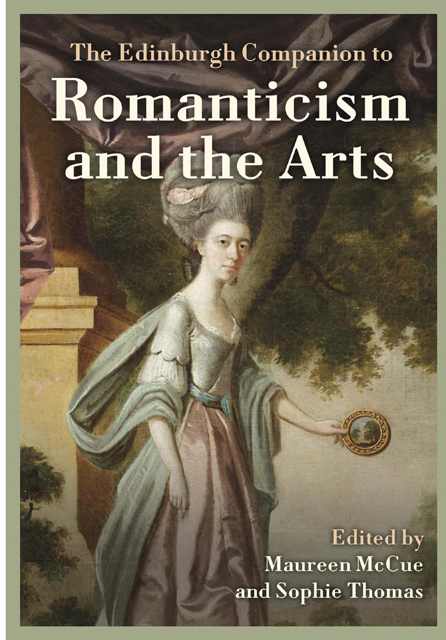16 - Romantic Art and the Novel
Published online by Cambridge University Press: 25 April 2023
Summary
Novels of the eighteenth and nineteenth centuries allude to art, to artists and to visual methodologies and techniques with remarkable frequency. This is unsurprising given that, as early as the mid-eighteenth century, ‘Britain was obsessed with visibility, spectacle, [and] display’ (De Bolla 2003, 69); and as David Marshall has observed, ‘literary texts’ of this time ‘were expected to act like paintings and present images and tableaux to the eyes or at least to the imagination, […] transport[ing] the reader into […] the scene being described’ (2005, 6). These tendencies endured, for, as the nineteenth-century essayist William Hazlitt (1778–1830) strikingly describes, it is ‘a luxury to have the walls of our rooms hung round with them, and no less so to have a gallery in the mind’ (1909, 210). Indeed, if readers lacked paintings on their walls, literature could offer recompense by giving them such a mental depository. Northanger Abbey’s (1803) Catherine Morland, for example, possesses this ‘gallery’ when she says that she never looks at England’s Beechen Cliff ‘without thinking of the south of France’ (Austen 2006, 107). She has not actually been to France, but Radcliffe’s ekphrastic descriptions of it in the Mysteries of Udolpho stimulate for her an inner pictorial life. In The Last Man (1826), Mary Shelley’s hero finds not only a mental ‘gallery’, but an artist too: there, in his mind, ‘imagination, the painter, sits, with his pencil dipt in hues lovelier than those of sunset, adorning familiar life with glowing tints’ (1996, 59). Oil covers a canvas and marble stands, but the mind itself is a painter, even without the ‘luxury’ of owning paintings.
In this chapter, I emphasise two interwoven strands: first, visual-verbal intertextuality – a term describing a novelist’s allusions to paintings or sculpture – enhances the reading-viewing experience, as it invites new and manifold interpretations of both media. This unsettles the competitive tradition existing between word and image, one that, as W. J. T. Mitchell explores, has gender ramifications, wherein ‘Paintings, like women, are ideally silent, beautiful creatures designed for the gratification of the eye, in contrast to the sublime eloquence proper to the manly art of poetry’ (1986, 110). As I show, however, novelists integrate the two modes to invigorate the affective and intellectual vitality in reading and viewing. Visual-verbal intertextuality thus animates relationships between these forms.
- Type
- Chapter
- Information
- The Edinburgh Companion to Romanticism and the Arts , pp. 295 - 312Publisher: Edinburgh University PressPrint publication year: 2022

